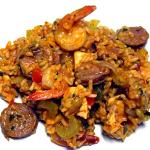A recent study from Clemson University sheds some light on double-dipping your favorite appetizers at a party: does it raise your risk for foodborne illnesses?
Foodborne Illness
Mycotoxins
Mycotoxins are metabolites, small molecules, produced by filamentous fungi. As long as the environment is favorable (type of substrate, temperature, and humidity), mycotoxins can develop in our food.
As cities and states across America slowly reopen for business, our leaders claim to be "following the science" as they lift restrictions.
By Benjamin Plackett, Contributor to Inside Science
Have you started your Christmas and/or Holiday shopping? If you're like us, you're putting it off to the last minute because you're too busy with other things. Here at ACSH, we've been busy telling the world about science.
We are currently undergoing an explosive outbreak of Cyclospora, a curious little critter that causes diarrhea. Scientists know almost nothing about it.
Every single day, you take several IQ tests. You just aren't aware of them.
Jambalaya, a southern Louisiana derivative of the Spanish paella, is said to have derived its name from the French “jambon” meaning ham and the “aya,” the African term for rice.











